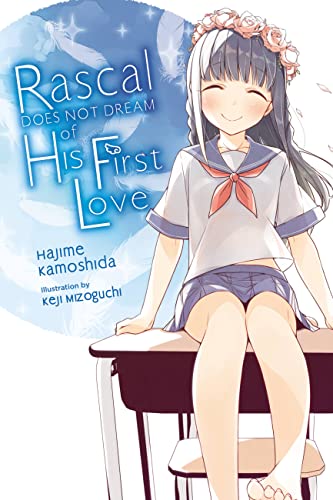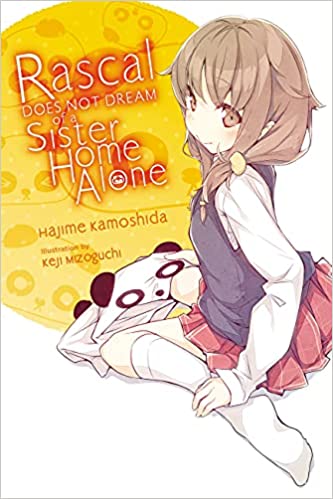By Hajime Kamoshida and Keji Mizoguchi. Released in Japan as “Seishun Buta Yarou wa Hatsukoi Shoujo no Yume wo Minai” by Dengeki Bunko. Released in North America by Yen On. Translated by Andrew Cunningham.
One of the things I like best about this series, which sets it apart from many of its contemporaries, is its use of short, quick sentences. The book reads fast, with dense paragraphs kept to a bare minimum and most of its page count being dialogue or inner monologue of some sort. However, this does not mean that it sacrifices any emotional impact – in fact, in many ways it’s heightened. The start of this book was always going to be a killer, and the prose makes it even more so. The sheer despair that Sakuta is feeling, the grief and rage that Mai’s mother and Nodoka have as they blame him for her death and cry out as to why it happened, it’s absolutely visceral and raw. Even knowing that this is not going to be permanent, that Mai will not remain dead (a series does not kill off its main draw), this is still a painful read. It gets better. But at some cost.
When we last left our heroes, Mai had just been hit by a truck. Sadly, she is not reincarnated in a fantasy world, but is simply dead. This shatters Sakuta, and things are not helped by the fact that a superstar actress died in order to save the life of her ordinary boyfriend – most of Japanese media is out to get him. refusing to accept Mai’s death, he returns once more to the beachfront we’ve seen in most other books in this series, and finds the older Shouko there once more. She reminds him of what almost everyone has experienced so far – Adolescence Syndrome – and that this might actually be a future we don’t want to see, rather than the present. But can Sakuta return to his “present” even though he’s already there? Will anyone notice him? And even if he can stop Mai from getting killed, who’s to stop HIM from dying?
I do wonder if there’s a fanfic out there showing what happened in that bad future if Sakuta couldn’t fix it, because the implication is there is no way the media would allow him to survive. Sakuta’s grief infuses over half of this volume, making it by far the least funny of the books to date, but that’s fine, you don’t want laughs here. When they come later, they’re as much a relief for Sakuta as they are for the reader. It’s also nice to see Mai reminding us that she is quite a sweet and loving partner, to the point where Sakuta has to actually find ways to upset her in order to have her be cool and menacing towards him (his professed fetish). And then there’s Shouko, whose life and death also rides on this book. The ending may be a bit sappy and unrealistic, but given the nature of the series, realism is not what I want. That said, it’s VERY abrupt – you’re waiting for another epilogue.
It’ll be interesting to see where we go from here, with the main backstory plotlines pretty much resolved. The next volume promises a return to Kaede’s attempts to go to school. Till then, please enjoy this cry of grief from the heart, and be thankful it all ended well.



